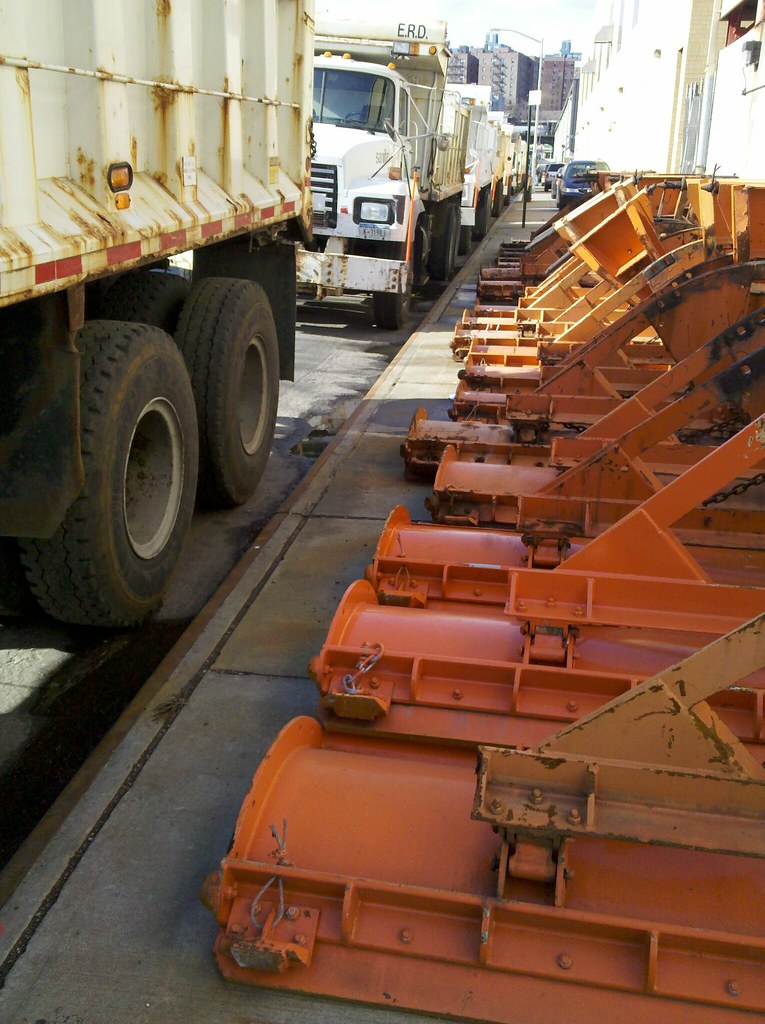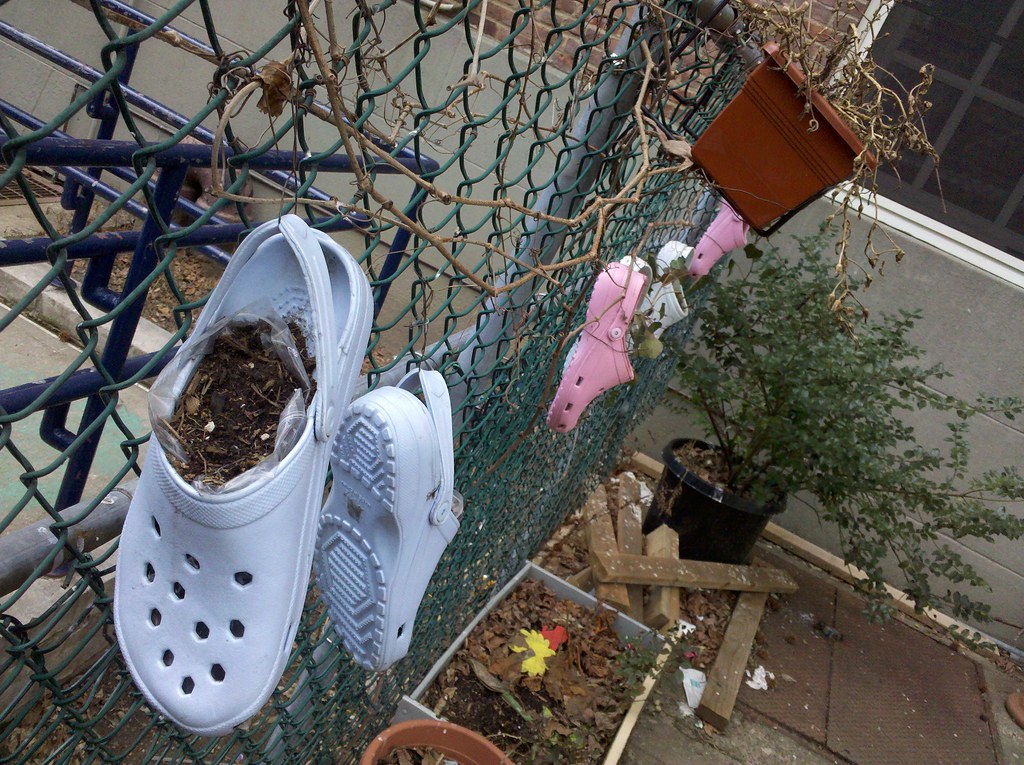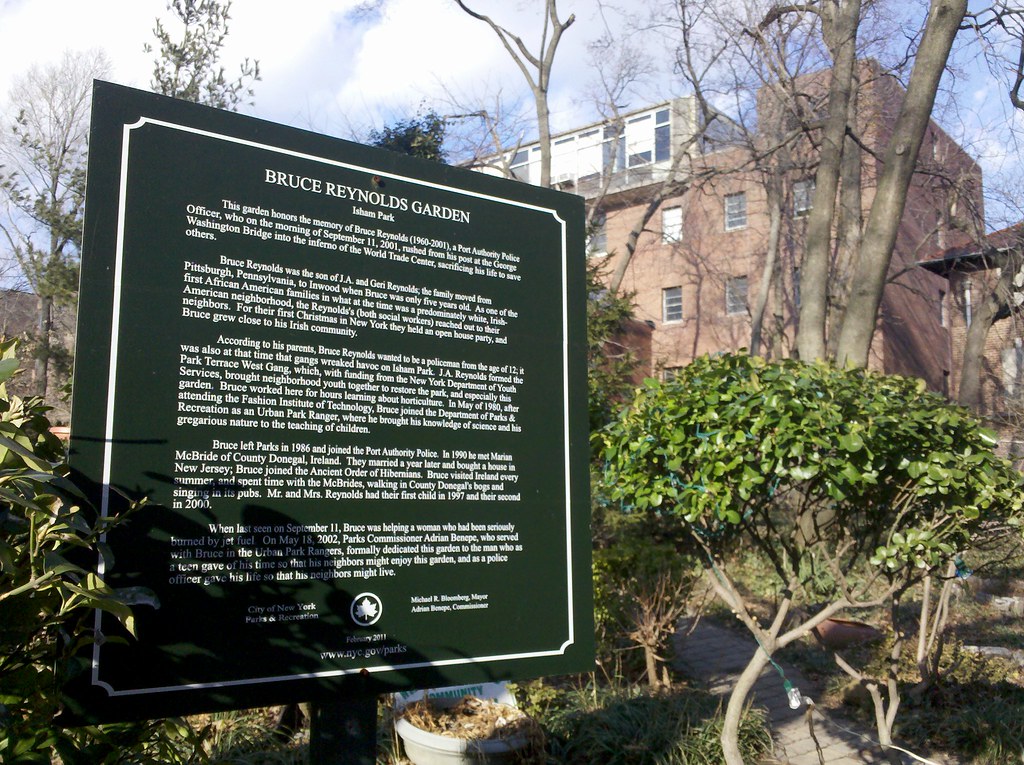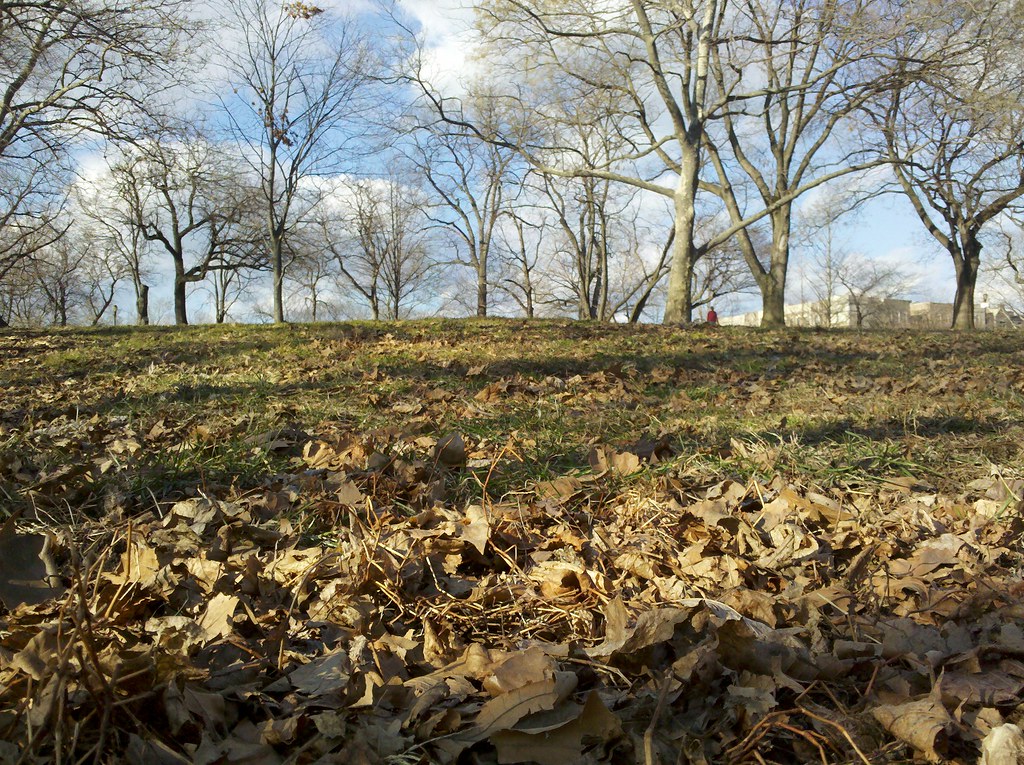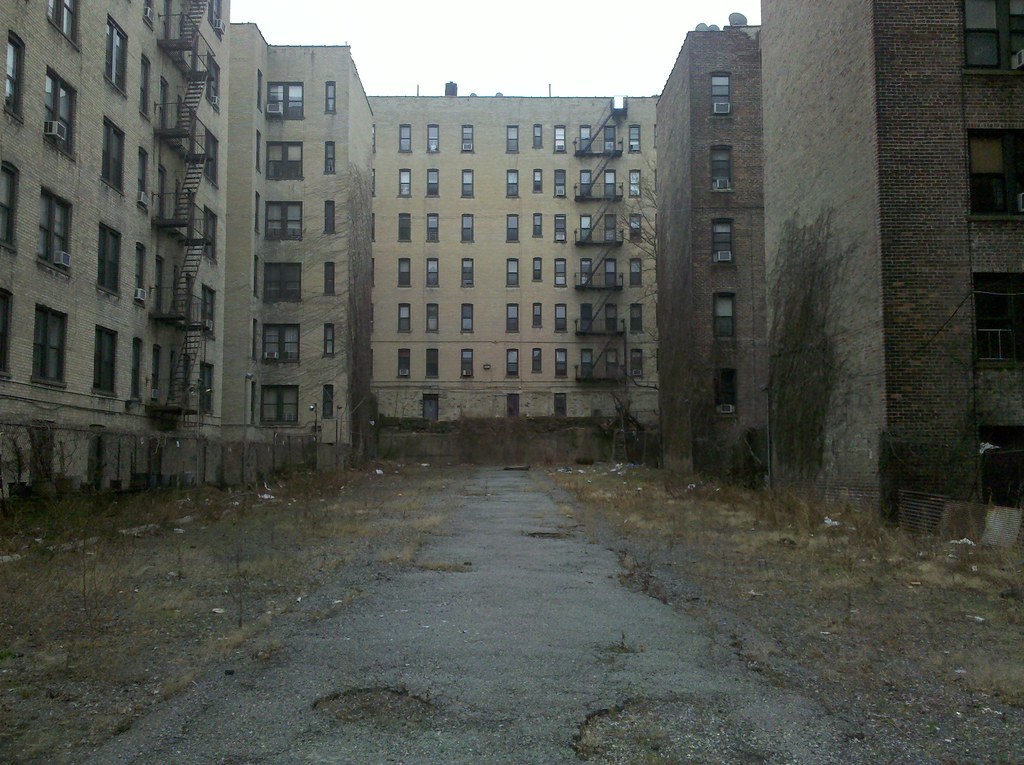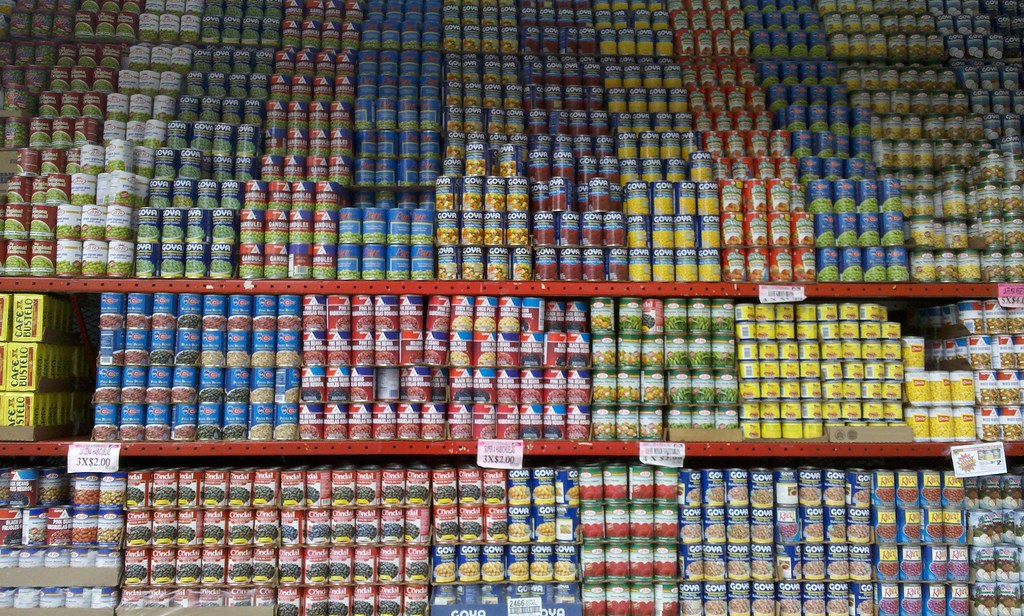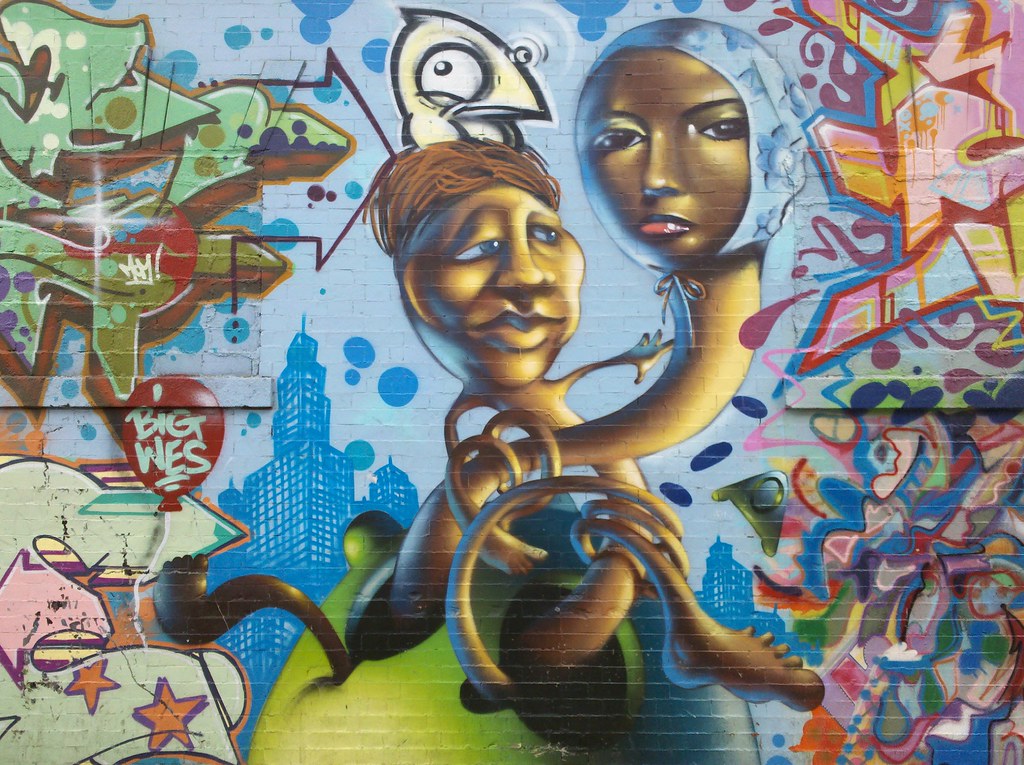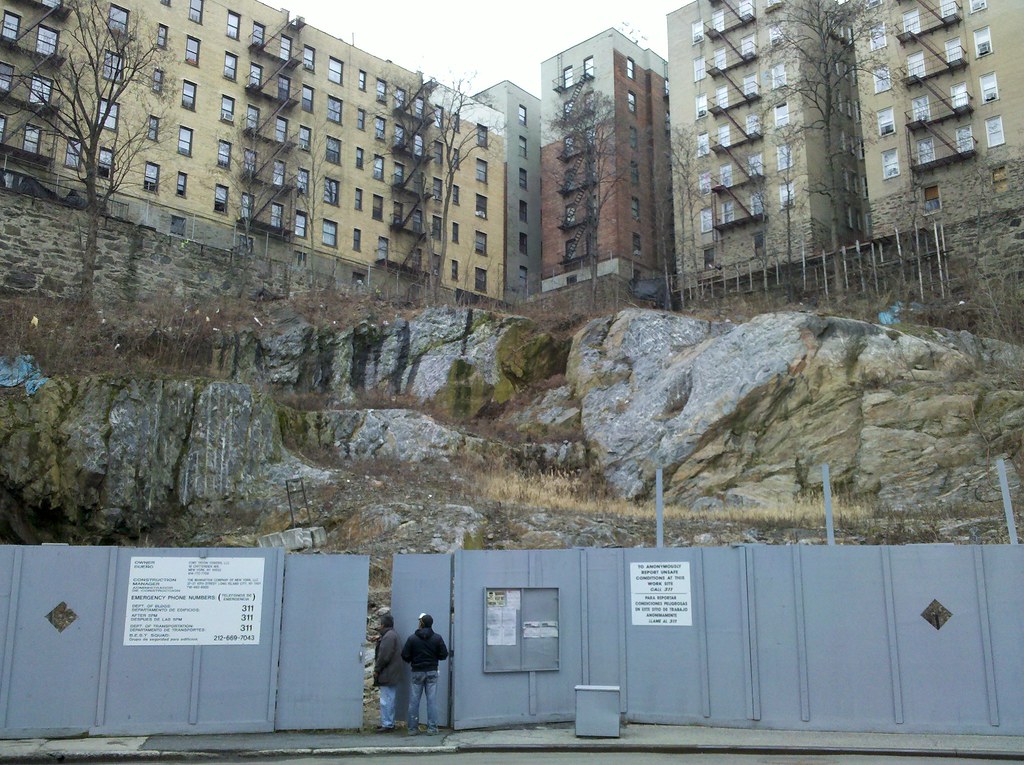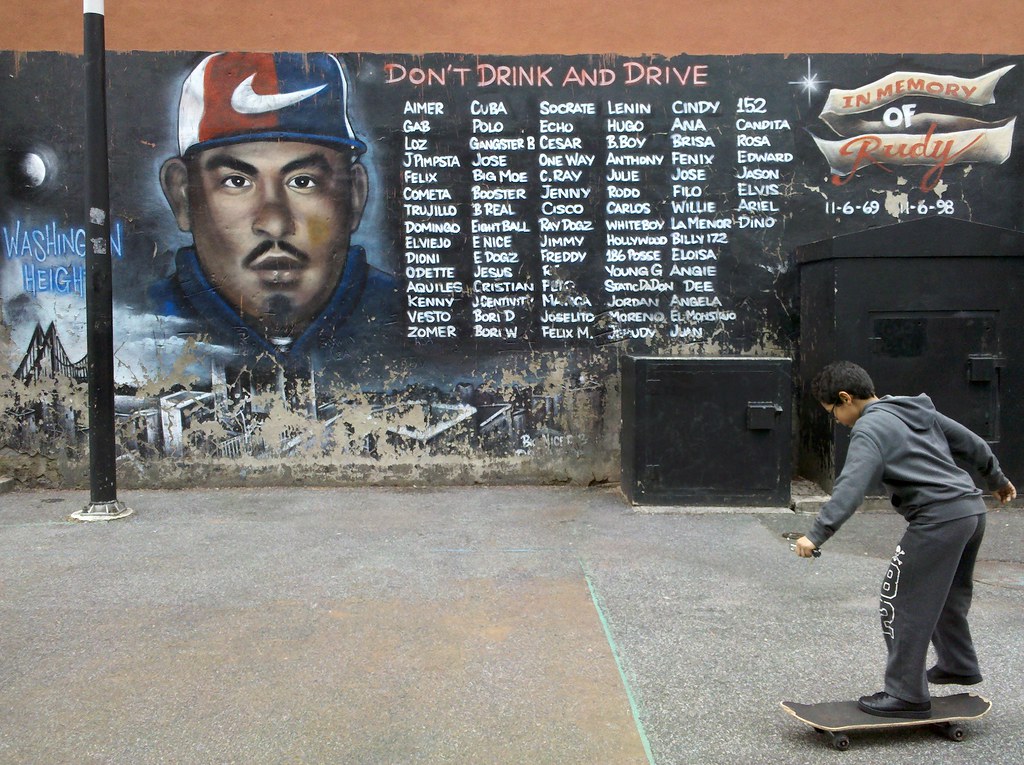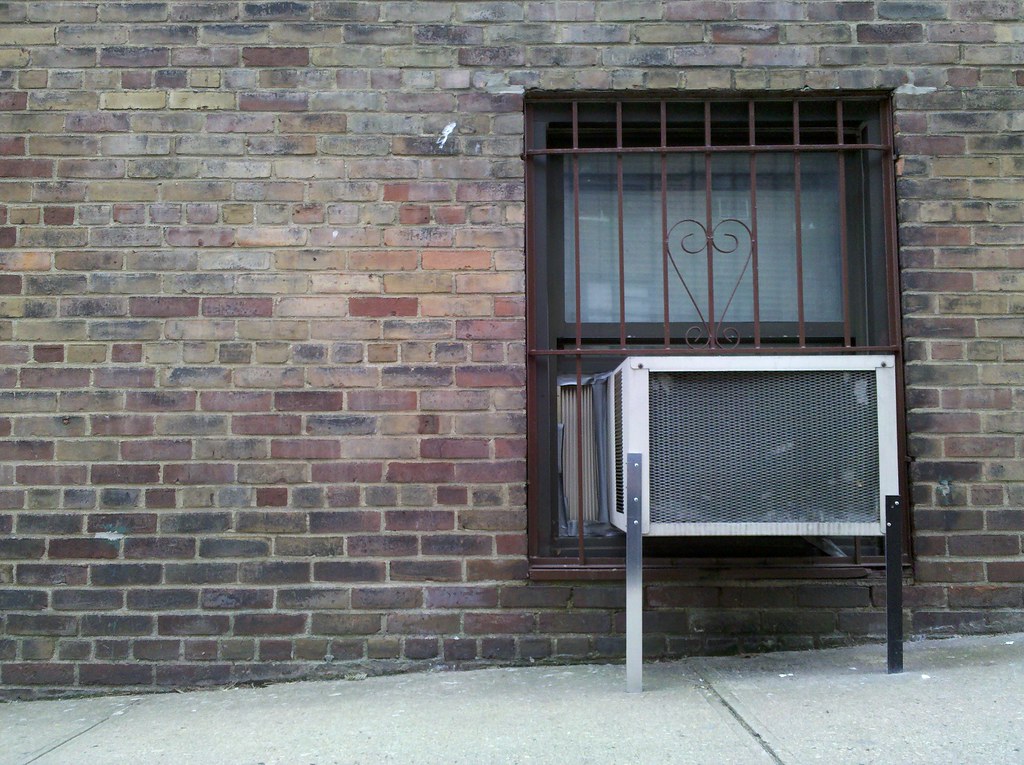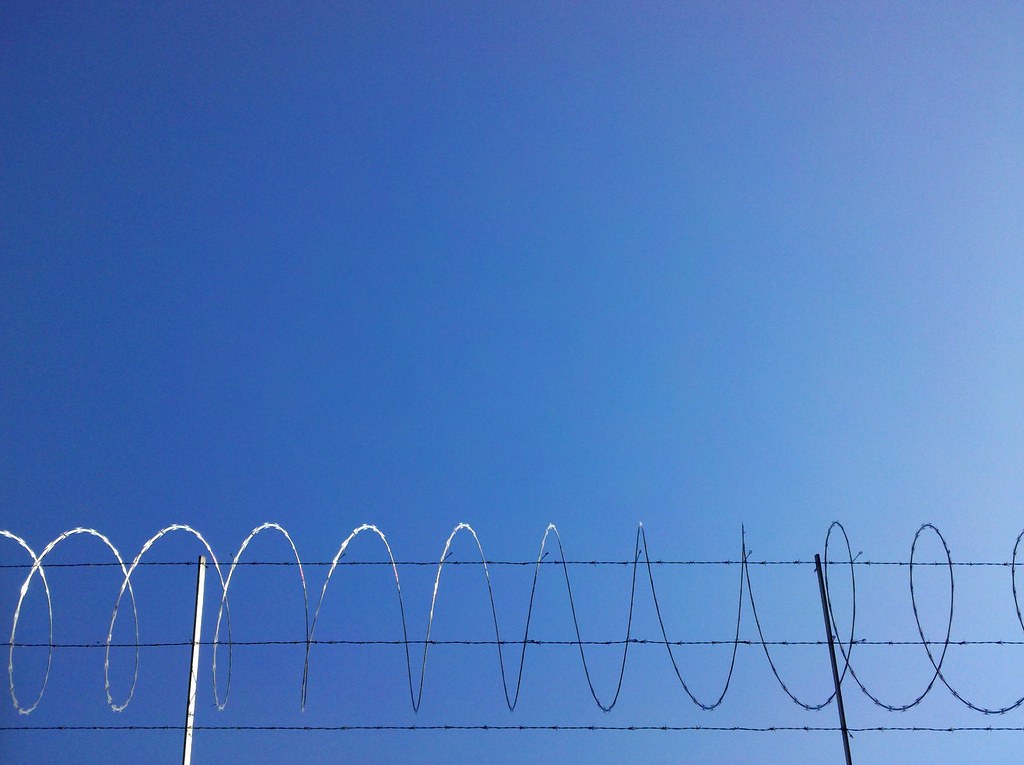
Atop the wall of the 207th Street Yard

Even a little patch of rocks on an industrial waterfront can feel like home. This is only about seven blocks north of another recreational hot spot.
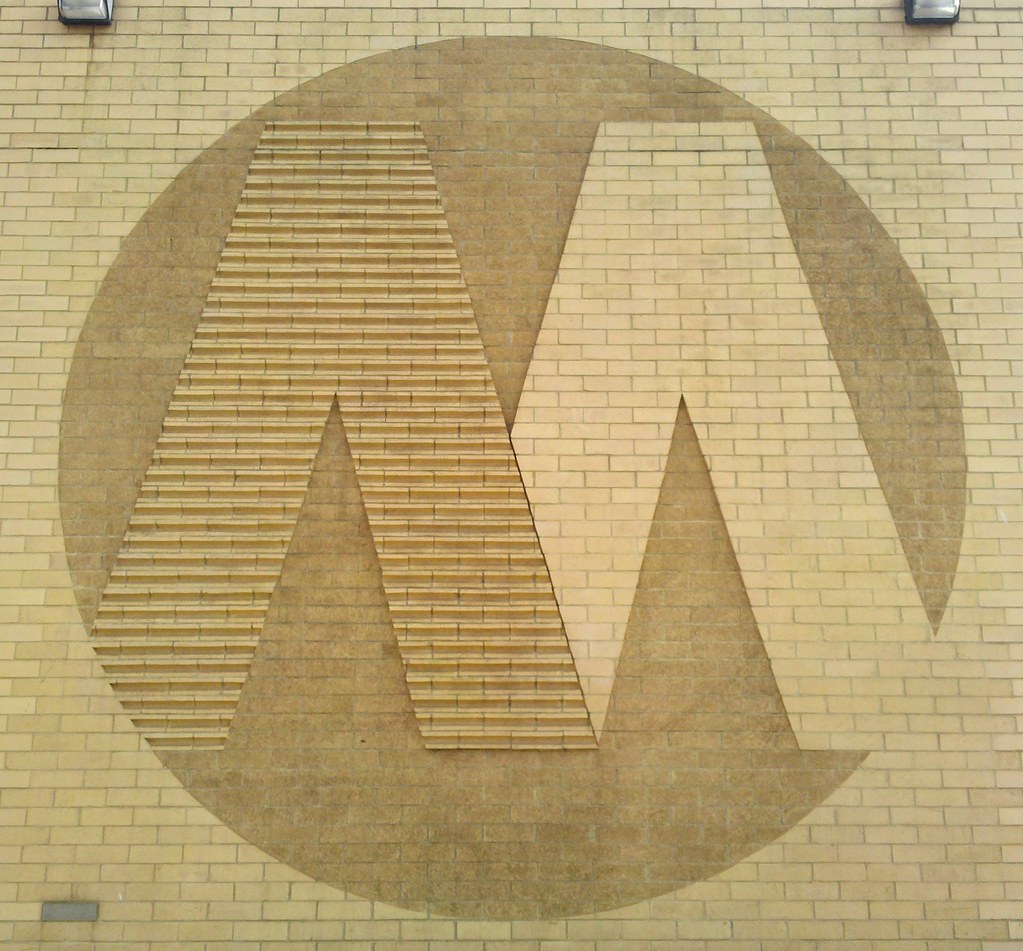
On the wall of the Kingsbridge Depot. Take a closer look.
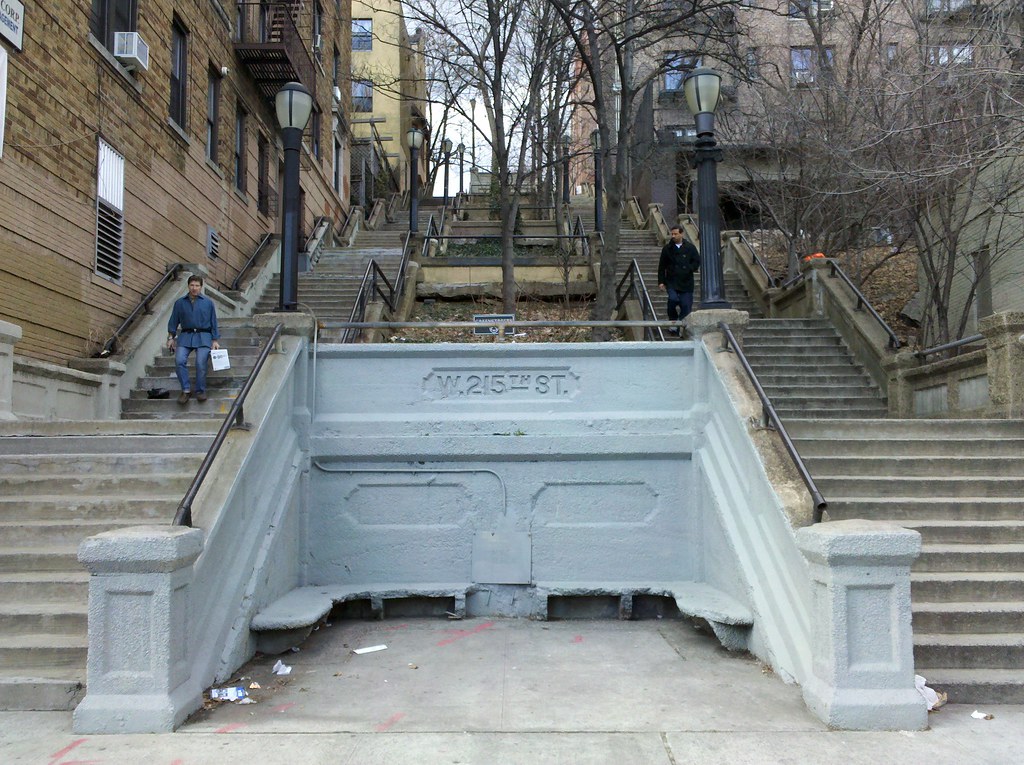
The automobile may have claimed dominion over most of our fair city's roadways, but there is still one thoroughfare where the pedestrian reigns supreme: the step street!
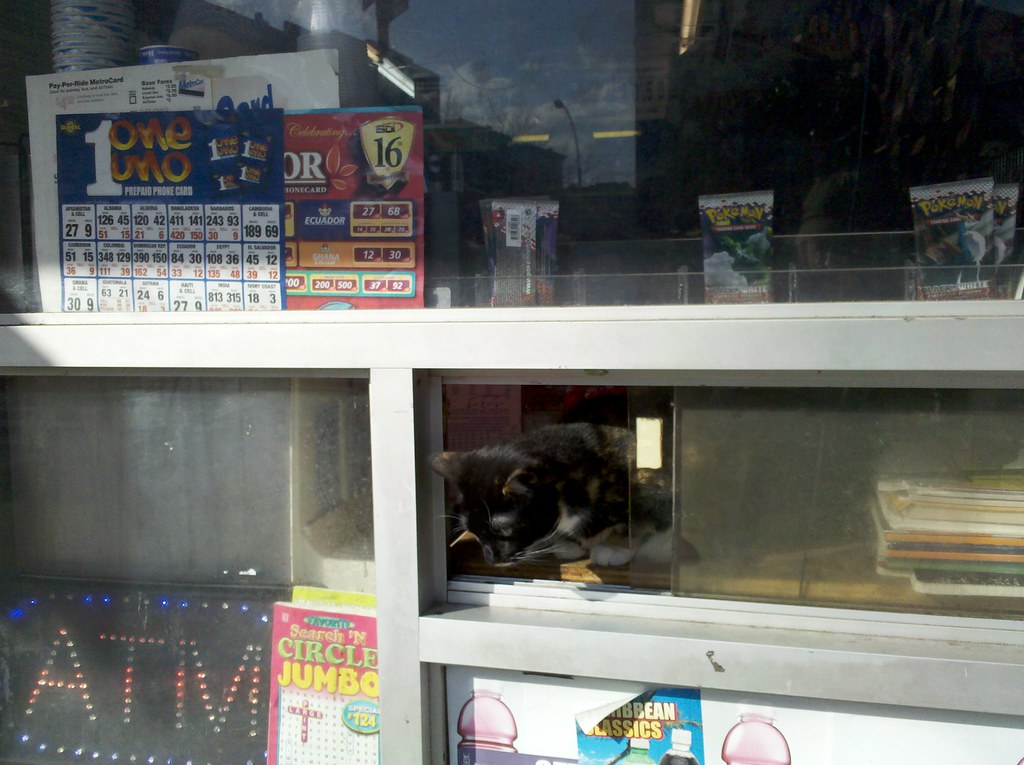
One of many hard-working felines protecting New York's potato chips from thieving rodents

It's not a utility wire, but the judges have decided to allow it anyway. Bad news for Elm Place!

A reminder of the mansion that once stood here in Isham Park. The companion bench reads "In that mansion used to be / Free hearted hospitality".

The front door is at street level. This photo gives you a better perspective on the hill.

He can get all the crumbs he wants with that kind of loot.

A surprising diversity of poster ads — you usually see several of the same ones in a row.
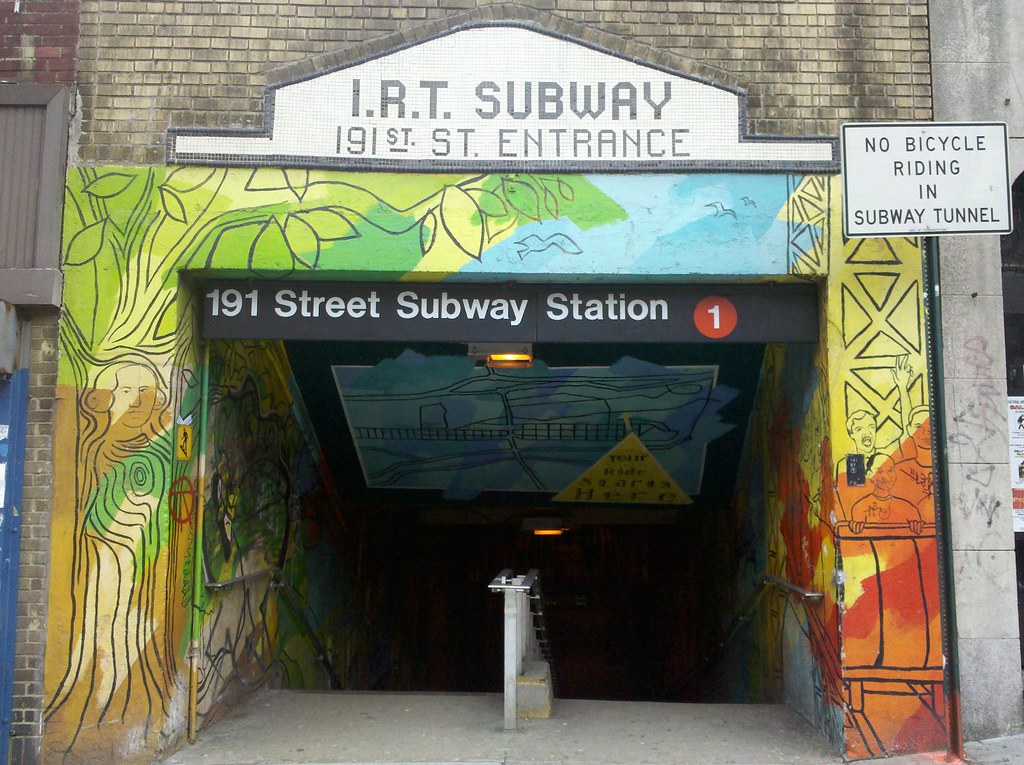
This entrance to the 191st Street station leads to a three-block-long tunnel that runs horizontally through the side of a hill. By the time you reach the train platform, there's 180 feet of rock separating you from the streets above you, making this the deepest station in the subway system. (Believe it or not, the next station to the north, Dyckman Street, is above ground; the hill atop this station drops off quite abruptly as you head north.)
In 1947, Victor Hess — a professor at Fordham University in the Bronx who won the Nobel Prize in Physics for his discovery of cosmic rays — needed to find a convenient location "to carry out experiments on the radiation emitted from rocks at a location well protected from cosmic rays." He asked the Board of Transportation if he could conduct his experiments in the 191st Street station, its depth inside the hill preventing the vast majority of cosmic rays from reaching it. While he didn't end up using this station, he did set up shop in the nearby 190th Street station on the A line, which is also buried deep inside a cliff, about 160 feet below ground.
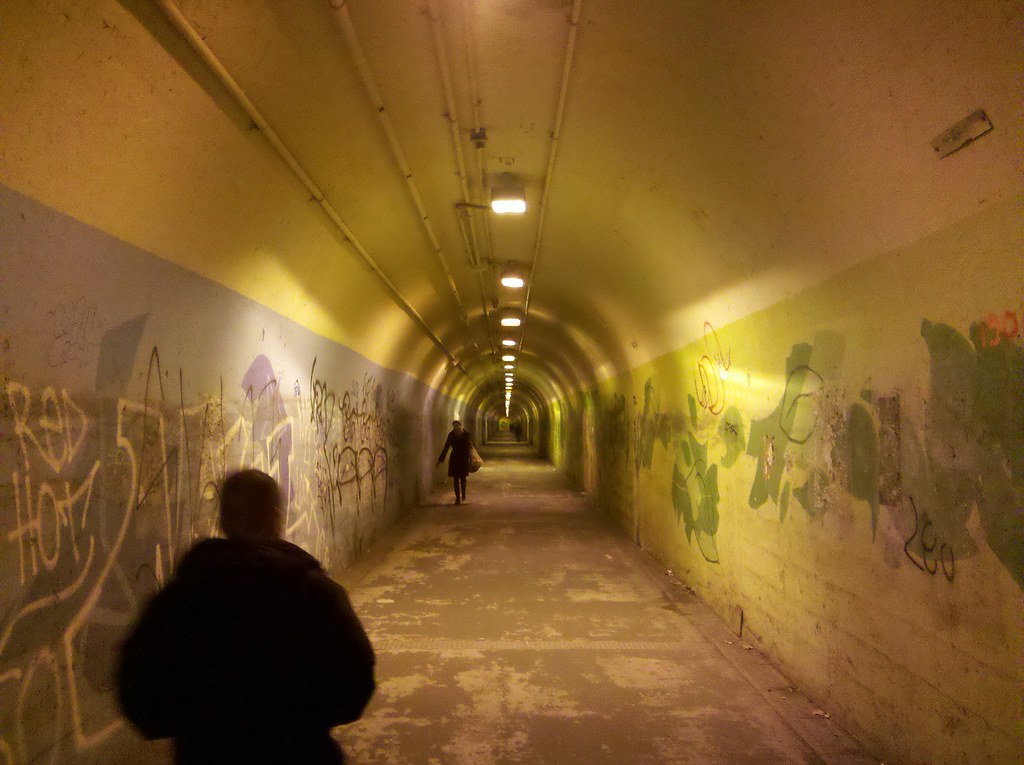
This is the three-block-long passageway that leads to the train platforms. I made an animated GIF of my progress through it.

The second entrance to the 191st Street station is located on top of the hill, and the only way to get from there to the train platforms is to take an elevator. There are four elevator cars, and one of them has a permanent human operator whose job is, basically, to press the elevator buttons periodically. It may seem silly to pay someone to do that, but there are a lot of people who feel much safer taking a long elevator ride if there's someone there to keep an eye on things.
The pedestrian tunnel connects to the elevator area outside of fare control, so people who are not riding the subway can still use the elevator as an easy (and free) way to get to and from the top of the hill.
Apparently the attendants (there are four other stations where they're employed, all in this hilly part of Upper Manhattan) used to be allowed to decorate their elevators, but the MTA has since cracked down on that freedom of expression.
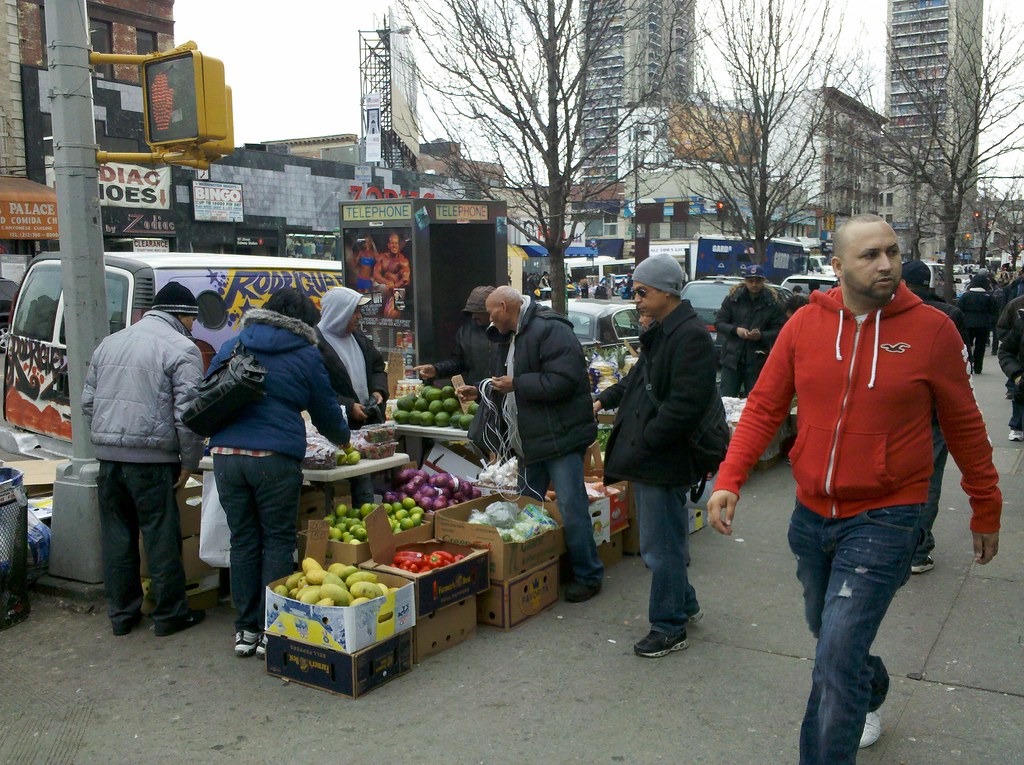
Those tall apartment buildings in the background are two of the four built over the Trans-Manhattan Expressway.
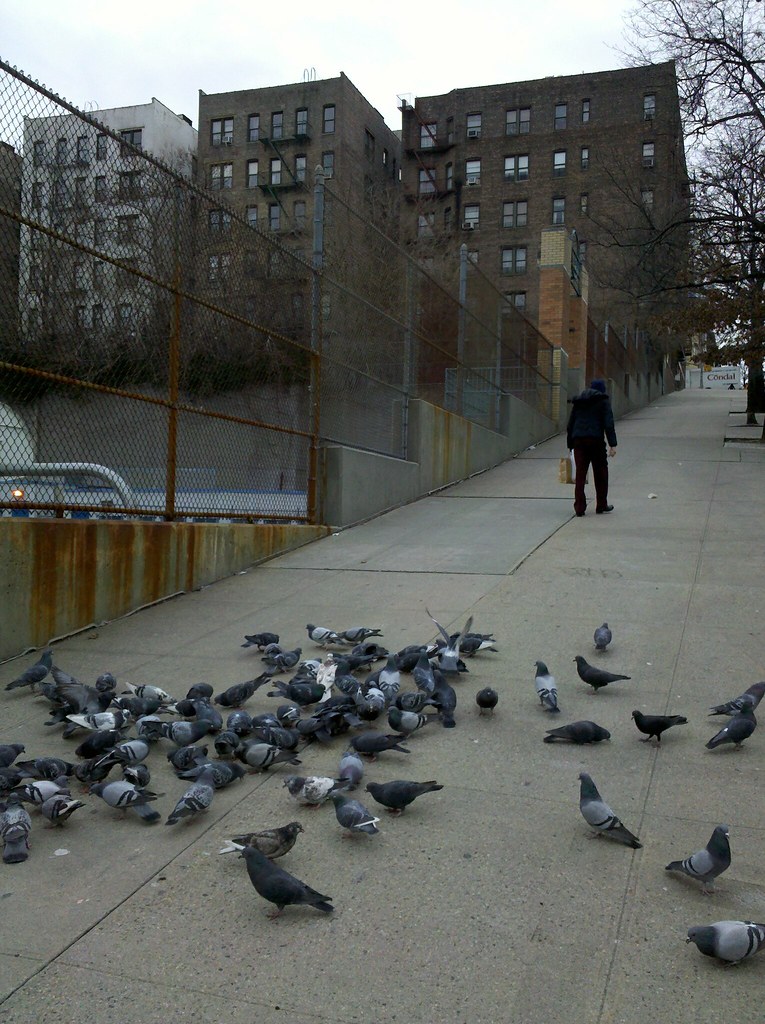
This older gentleman, while slowly making his way up the hill, reached into his shopping bag and extracted a couple handfuls of unpopped popcorn, which he then tossed to the mob of pigeons currently snacking upon them. It's good to see New York's pigeon feeders branching out from the ever-so-clichéd bread crumbs.
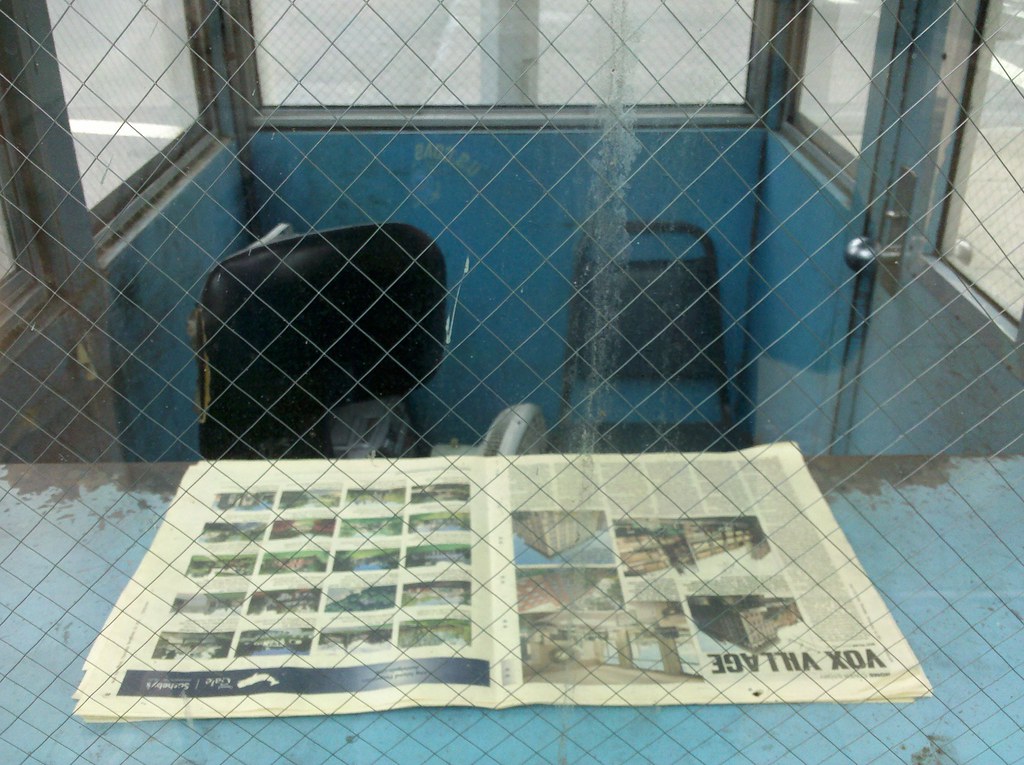
I've seen a few of these little NYPD booths elsewhere in the city, but I must have passed by at least half a dozen (not counting a couple of similar private security shacks) today while walking around Yeshiva University in Washington Heights. I'd guess it's been a while since this one was last used: that copy of the New York Post is from November 10th of last year.

There's no sign indicating what this fenced-in area is, but it has the feel of a memorial garden. Which would be fitting, given the man for whom the surrounding playground is named.

Broadway runs through a steep valley in this part of Manhattan, somewhere out of sight beneath all those barren limbs. You can see the top of the cliff on the other side of the valley, where street level is considerably higher than the roofs of the multi-story buildings one block closer to the camera.


